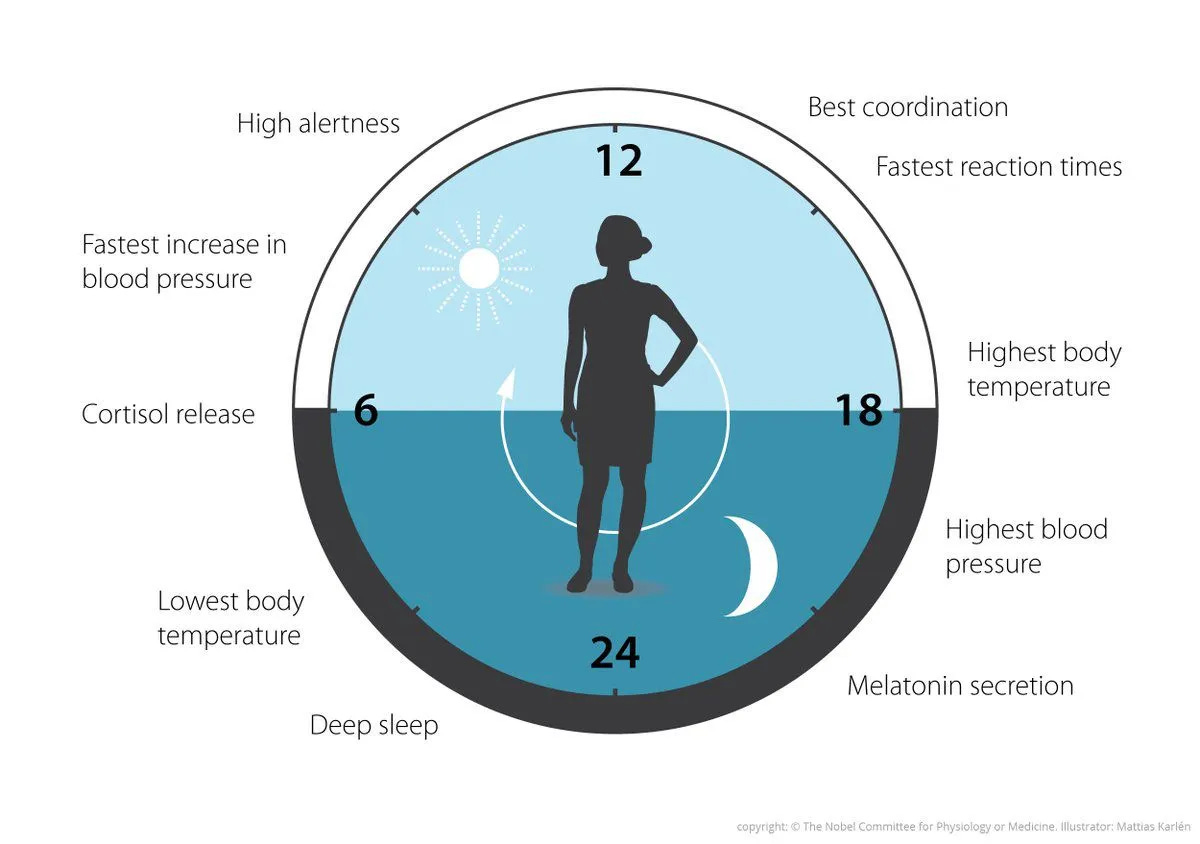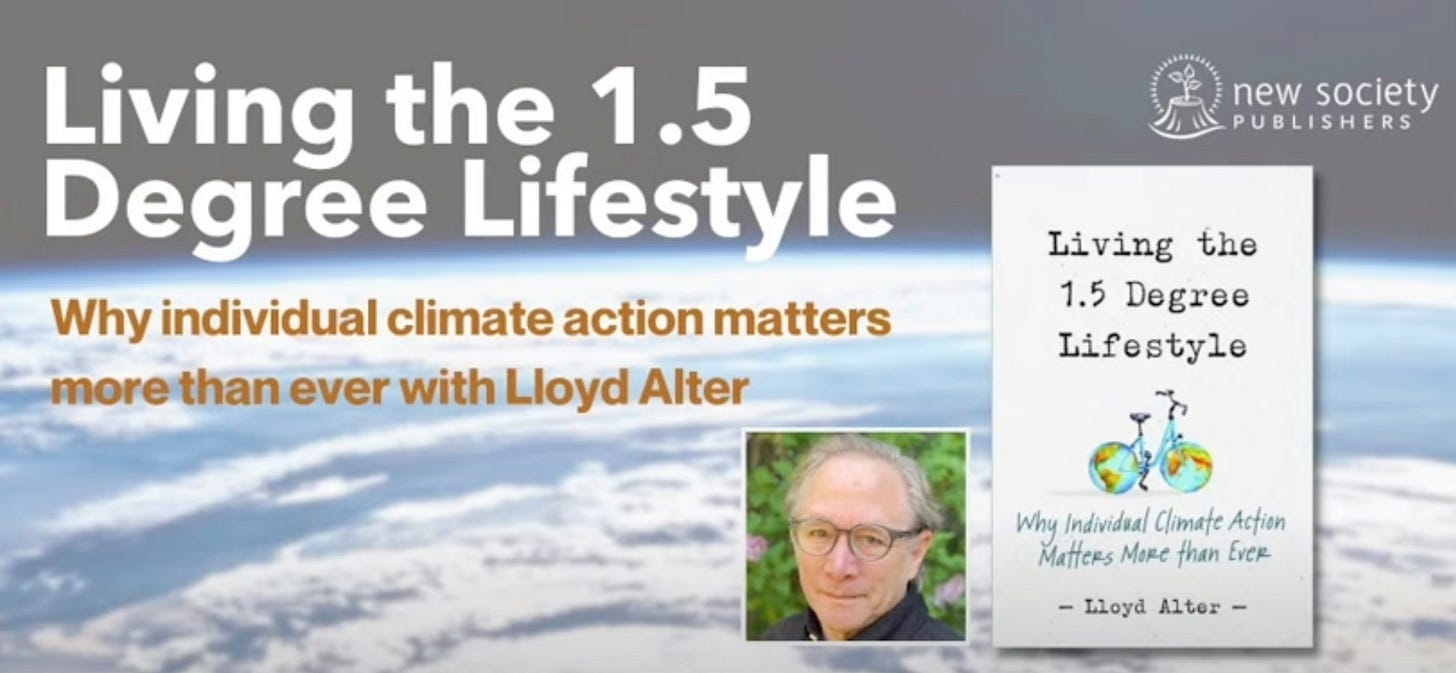Low-E coatings on windows save energy but may be messing with our health
The coatings let visible light in but reduce wavelengths of light that we need for our health.
For many years, I have been struggling with the question: What is the purpose of a window? I have talked to so many people about this;
The late Monte Paulsen taught me to “Only place a window where it has a specific purpose and where it is the best solution to serve that purpose. Common purposes: light, view, ventilation.”
Engineer Nick Grant wrote that “windows should have size and position [that] are dictated by views and daylight rather than energy gain or loss.”
However, there is another function of windows that we have often ignored: our need for natural light to manage our circadian rhythms. I have noted that we need windows because “Daylight is a drug, and nature is the dispensing physician.” But it turns out that those Low-E coatings we add to our windows to keep infrared and ultraviolet light out of our homes, to reduce heat loads and fading of upholstery, are cutting out the light our bodies need, not only for circadian rhythms but for general health. If daylight is a drug, then the Low-E coatings are messing with the dose.
Lisa Heschong, known to many for her classic 1979 book, “Thermal delight in Architecture,” does windows in her more recent book Visual Delight in Architcture: Daylight, Vision and View, (which I have not completed and will be back with a review) and describes the benefits of sunlight:
As a 2016 paper in the journal Medical Hypotheses discussed, “During the last decades new favorable associations between sunlight and disease have been discovered. There is growing observational and experimental evidence that regular exposure to sunlight contributes to the prevention of colon-, breast-, prostate cancer, non-Hodgkin lymphoma, multiple sclerosis, hypertension and diabetes. Initially, these beneficial effects were ascribed to vitamin D. Recently it became evident that immunomodulation, the formation of nitric oxide, melatonin, serotonin, and the effect of (sun)light on circadian clocks, are involved as well.”
However, she also describes the effect of Low-E coatings:
Simple clear glass, manufactured since Roman times, filters out most of the UV and some of the IR in sunlight, while allowing almost all the visible spectrum to pass through. Low-emissivity glass (low-E) reduces the amount of infrared heat that can pass through glass. ‘Selective’ is a term used for glazing material that has been formulated to specifically optimize the amount of illumination measured in lux that passes through a window while reducing all other wavelengths.”
The problem is magnified in the age of LEDs, which tend to pump out a lot of blue light bordering on ultraviolet. Most white single colour LEDs actually work by firing an LED that emits UV light onto a phosphor that then glows white. This is fine in the daytime, but as Dr. Moore-Ede notes in THE LIGHT DOCTOR: Using Light to Boost Health, Improve Sleep, and Live Longer, at night, we need warm, red light.
During the daytime hours, blue light photons in the 460-495 nm range are the most potent in synchronizing our circadian clocks and strengthening our circadian rhythms which are so important for health. But during the nocturnal hours, between sunset and sunrise, when our circadian system is most sensitive, blue light in a broader range between 440 and 495 nm can cause circadian disruption and precipitate the host of medical disorders we have discussed in previous chapters.
On his Light Doctor blog, Dr. Moore-Ede mentions windows:
Window glass in modern buildings filters out much of the ultraviolet, deep violet, and infrared parts of the natural light spectrum. The windscreens of our cars also block ultraviolet and deep violet light… What is the impact of depriving us of the deep violet part of the natural light spectrum? Among other outcomes, it has led to a global epidemic of myopia ( i.e., short-sightedness), which is projected to rise from 23% to 50% of the world’s population by 2050.
I was surprised to learn that blocking infrared light is a problem, too.
Recent research reveals just how important this infrared light is to our health. When this infrared light penetrates our body it energizes the mitochondrial batteries which power cellular metabolism, and reverses the effects of ageing and disease.
Today, we live in an infrared-deprived world where the average person spends only 7% of their time outdoors. The increasing use of E-Glass in our windows, which blocks infrared rays to keep buildings cool, and LED lights that provide only a narrow range of visible light wavelengths with little deep red, and no infrared, narrow the light spectrum we experience indoors in the name of energy efficiency. We are no longer exposed to the near-infrared light generated by the wood fires, candles, and incandescent light bulbs of past years.
Lynne Peeples, author of The Inner Clock: Living in Sync with Our Circadian Rhythms, suggests that we should take our window coatings seriously. She worries about the blue light and the red light, which “could protect against retinal disease, Alzheimer’s disease, and other aging-related problems.”
Since their introduction in the 1980s, new generations of low-e (for “low emissivity”) window coatings have progressively narrowed the band of transmitted light ever closer to only the visible portion of the spectrum, focused around that 555-nanometer mark favored by daytime color vision. The idea is to maximize visual performance and minimize energy loss through the glass. Building codes now typically mandate these highly energy-efficient windows. It’s all well meaning, of course. Saving energy as we confront the concerns of climate change is crucial. Just like with the light emanating from our electric bulbs, it made good sense to concentrate the light coming in through our windows to those visible wavelengths. But, given what we are learning now, we may want to reconsider.
Indeed, we may want to reconsider. In my post complaining that Windows are hard, I concluded: “The rules haven't changed in 500 years: Keep the windows as small as you can get away with and still let in the light and views that you want, with an eye for proportion and scale. And keep it simple.”
But it is not so simple; we need to get enough light to meet our biological needs, which is not only a function of size and orientation but also the shading and, now we learn, the glass. I will give the last word to Ali Heshmati of Henning Larsen Architects, who left a long comment on my post What is the purpose of a window?
I respectfully but strongly want to disagree with you on size of windows and the amount of natural versus LED light we need and can use.
Most of chronobiological, neurobiological, and neuroscience studies in the last 25 years, show that almost all built environment is overly dim during the day and overly bright at night. Now, this is due to the fact that we did not know about the mechanism of photoentrainment of the circadian system which needs intense light at early hours of the day and almost total darkness at night. Most of our light environments, today, are designed for vision. Visual photoreceptors need very little light and can process that light in milliseconds. Take moonlight for example, one can see one's shadow walking in the moonlight which has intensity of less thank one lux of light. Now, consider our evolutionary conditions of solar irradiance of 100,000 lux by midday and almost total darkness at night. These are conditions that gave birth to our biology. So, the scientific recommendations today for light for health is around 250 MEDI or Melanopic lux which is around 800 lux from some other source of light. Now, even the plain glass cuts 30% of incoming light. Add a number of coatings and shading devices we use in architecture, even when we have full glass walls, we get very little light inside.
Therefore, Daylight and window size matter.
More reading about windows:
Why we need “windows with purpose” As the world heats up, we have to rethink how we design them, especially in multi-family dwellings.
The new manual: What is the purpose of a window? Do we need them at all? If so, how many and how big?
Rethinking Window Size Windows are carbon-intensive and a source of air leakage, so let's make them smaller.
Is LED Lighting More Energy-Efficient Than Daylighting From Windows? Windows should be designed for well-being and beauty, not watts or lumens.
Windows Deliver a Lot More Than Just Light and Air A Swedish study finds they have important social and psychological functions.
Special Offer!
I do not want to put up a paywall on this site, but it provides a meaningful portion of my income. So here’s a limited time offer: I will send a signed copy of the print edition of “Living the 1.5 Lifestyle” to anyone in the USA or Canada who signs up for a one-year subscription (C$50, cheap at about US$34.95 ) If you live in London or Glasgow, I will bring them personally in late May, and we can arrange a pickup.











Greatly informative post, Lloyd. Thank you.
There is so much more to light and its impact on our health and well-being. But I really like to the way you connected it to our living environment. We can all use more light. If we can agree that at the moment we are not getting the correct amount of light indoors, then we must do two things. One, spend more times outdoors especially early during the day, if we can. Two, redesign our living environment with a focus on health and well-being. We are part of the natural ecosystem and our built environment needs to embrace and reflect that. We need convertible spaces, soft edges, and mid-scapes.
This is a very interesting post and I need to read some of your references. At the moment I am working on a presentation for the Westford Building Science Symposium this summer called Fundamentals of Solar Energy. This has me looking at the solar spectrum, the effect on the spectrum with different glazing choices, and the spectra offered by artificial light sources.
Low-emissivity coatings vary a lot in terms of their transmissivity vs. wavelength. What I will call 'solar low-e' coatings such as hard-coat products such as Cardinal i89 (I'll use Cardinal products as they are the ones I know best) or soft coat 180 don't suppress near IR much compared to clear glass. So they let in more heat. That's desirable if a building is well oriented (south in my part of the world, central New England) and not over-glazed. The introduction of heat-rejecting low-e coatings achieve their performance by reducing VLT some, but near IR a lot. In the Cardinal product line-up, Low-e2-272 has become a pretty standard product in most high quality residential windows being sold into our market, and low-e3-366 has appeared on submittals for a number of my residential projects in recent years. This has allowed designers to use more glass in non-optimum orientations.
Here are center-of-glass values for double glazing with the three low-e coatings:
clear ext, 180 int - 0.788 VLT, 0.676 SHGC
272 ext, clear int - 0.716 VLT, 0.413 SHGC
366 ext, clear int - 0.645 VLT, 0.272 SHGC
The Solar Heat Gain Coefficient is a measure of total energy transmitted (by all processes, so includes conduction and re-radiation, etc., not just transmission). The selective low-e products attempt to suppress VLT minimally while cutting as much near IR as possible. Cardinal's data for 366 shows close to zero transmission in the near IR.
So, if these health effects are real, then it seems that proper orientation and appropriate glazing amounts become even more helpful, so as to use solar low-e instead of heat rejecting low-e. I chose triple glazing in the gut renovation of our house in 2013. There are five large fixed windows along the south side totalling about 90 sf (8.4 m2) of glazing, and the lay-up from out to in is low iron clear/180/180. VLT is 0.698 and SHGC is 0.618. That space is where we spend most of our time (kitchen-dining-living, one room). It's pretty bright!
Zooming out from windows, it feels to me that getting outdoors is most important. My own commitment to myself is to spend two hours minimum outside daily. I do wear sunglasses during much of that time, so perhaps I'm not getting the light benefits, but I'm on a bicycle pretty much daily and need eye protection from physical damage.
Thank you for this post.